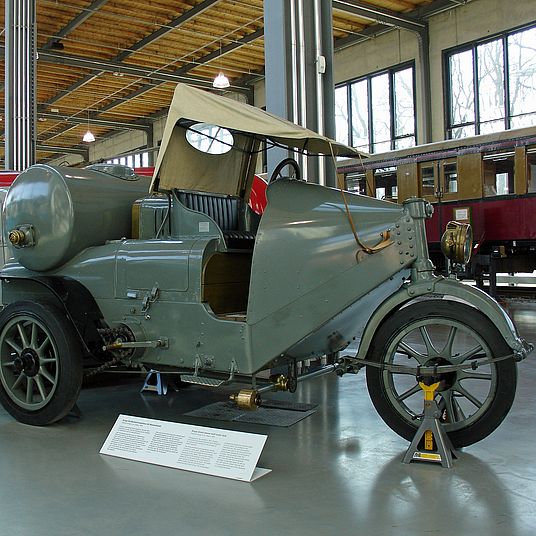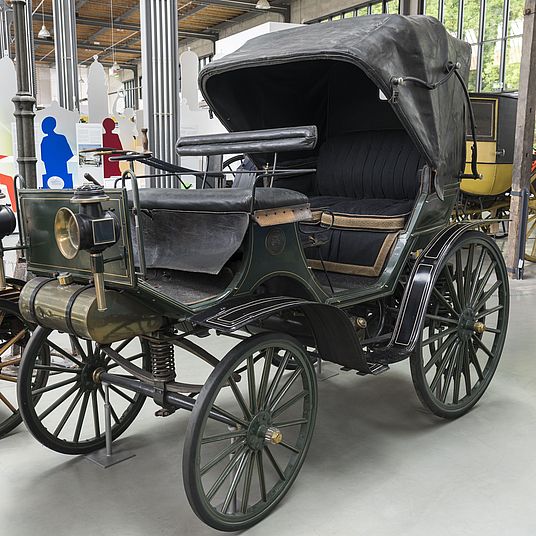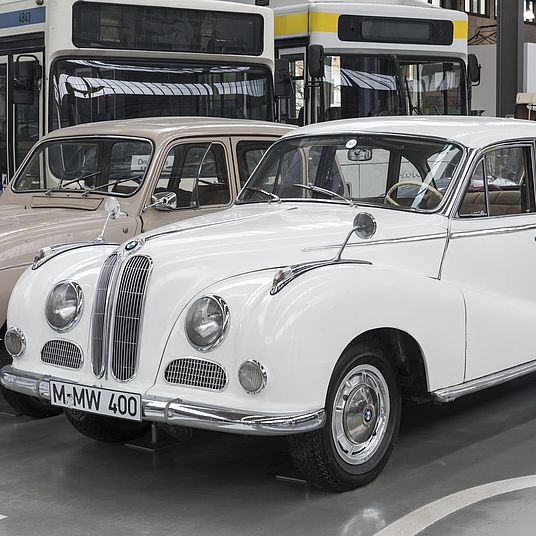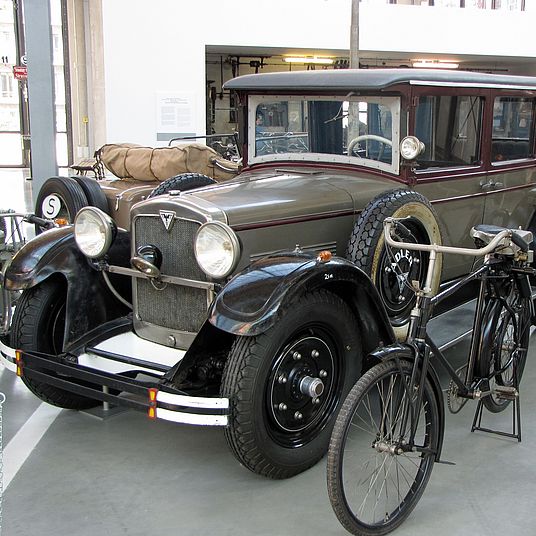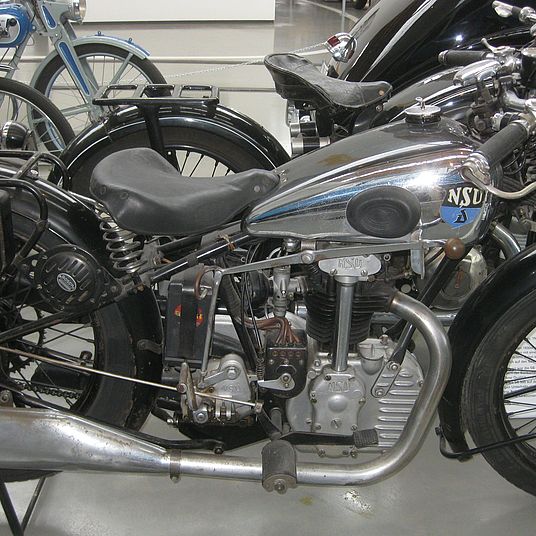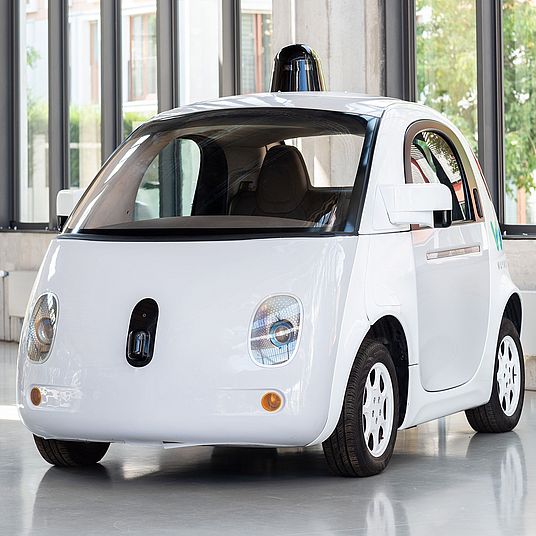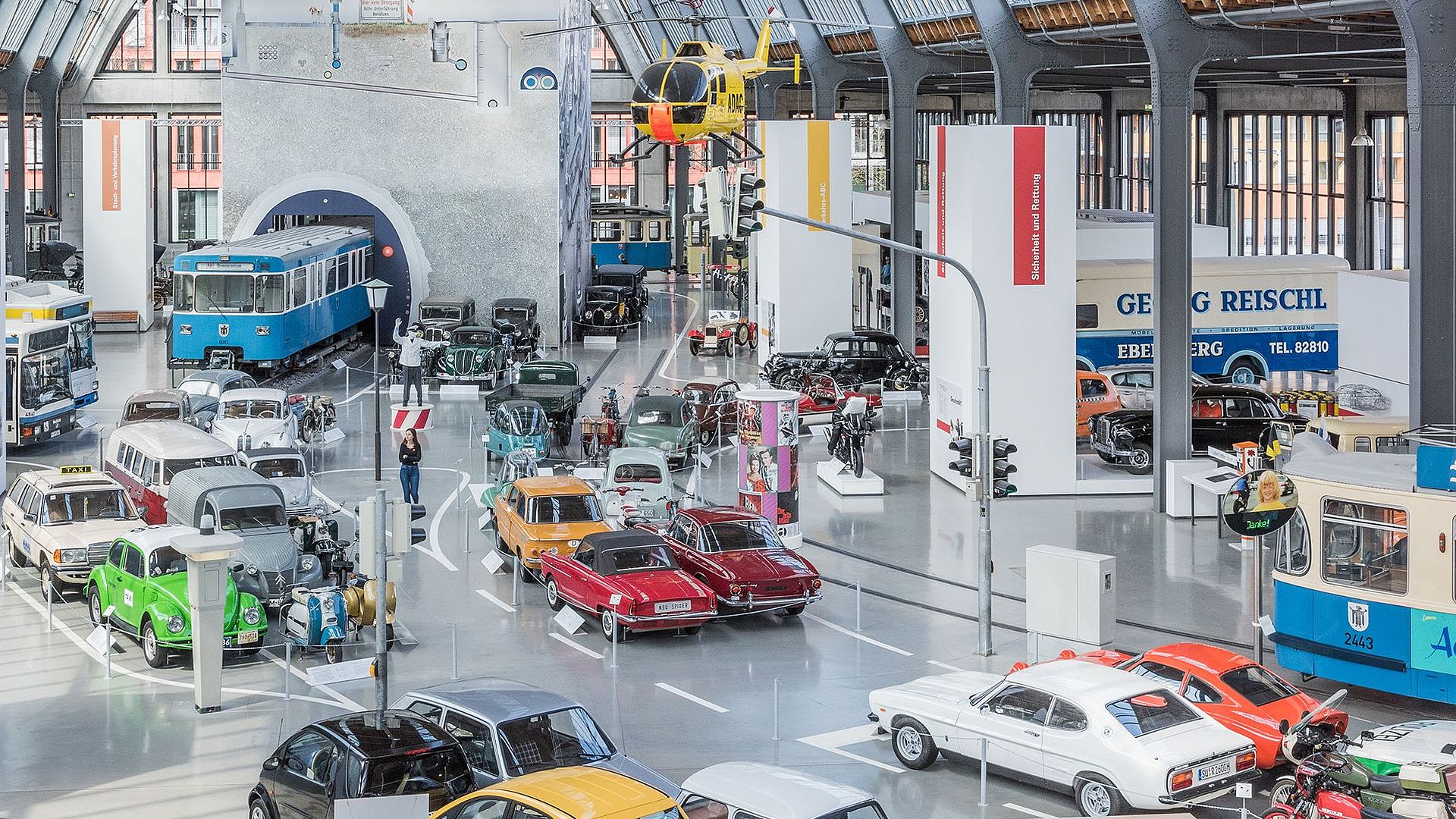
Photo: Deutsches Museum
Exhibition
Urban Transport – Yesterday and Today
The exhibition presents urban transport from the present all the way back to the 1900s. Learn about horse-drawn trams, bicycles, automobiles and much more.
The tour starts in Hall I in the urban transport area: a large road display leads from the present back to the time around 1900. On display are public transport vehicles such as trams and buses, as well as many vehicles that brought mass individual transport onto the roads - such as bicycles, VW Beetles and Messerschmitt cabin scooters. Grouped around the display collection are theme-based islands, for example the traffic ABC with the historical "sign forest" or safety and rescue. Crash vehicles are shown here, you can see how an airbag works or how a rescue chain works.
Other themes – Urban Transport
Traffic scenery in hall I Photo: Deutsches Museum
Overview
The traffic timeline in Hall I traces vehicles and objects from the 1900s up to the present day. On display are various means of public transport, such as trams and buses, as well as many vehicles that brought individual mass transport to the streets – from bicycles to the small and medium-sized vehicles that were constructed by the millions in the post-war era. The peripheral areas of the exhibition are divided into thematic areas that delve into particular aspects of historical and current developments in the field, such as the environment and public transport.
Car-sharing electric vehicles, cycling, automated minibuses: this is what road traffic could look like in the future. Photo: Bosch AG
The Future of Mobility
Which mobility type are you? How future mobility is shaped depends on our mobility behaviour, but also on the technology we use. This theme island shows which environmental problems the transport sector poses and what can contribute to solving these issues.
View of the exhibition area Urban and Transport Planning. Photo: Deutsches Museum
Urban and Transport Planning
How well traffic runs and who can find space on our roads depends largely on the layout of our cities and on transport planning. The larger and older the cities, the more difficult it is to rethink infrastructures and transport connections. This theme island shows examples from many cities including Munich.
Exhibition area Public Transport. Photo: Deutsches Museum | Christian Illing
Public Transport
Here you can see an overview of the history of public transport systems in the wake of the industrial revolution and urbanisation. The rise of public transport from 1880 onwards is considered the greatest transport revolution in the urban history of the modern era.
Exhibition area Transport ABC. Photo: Deutsches Museum
Transport ABC
With demonstrations, signs and a driving simulator, this exhibition area presents a retrospective on driving school and traffic education through the decades. It shows how the steady rise in volume and speed of traffic made greater regulation necessary. The historical development of traffic signs can be traced in the "sign forest".
Crash test vehicle Photo: Deutsches Museum
To the Rescue
Original crash test vehicles reveal how active and passive safety systems in cars – such as rigid passenger cabins, crumple zones and seat belts – can prevent accidents and mitigate the aftermath. At the interactive “Saving Lives” media station, visitors can learn techniques for saving lives in an emergency.
Inside the Exhibition
Video: Urban Transport Guided Tour
Guided Tour through the Urban Transport Exhibition
This video is only available in German. Guided tour of the Urban Transport exhibition in Hall I: From horse to horsepower - The beginnings of motorised urban transport around 1900 with Bettina Gundler, head of the Verkehrszentrum. (Duration approx. 30 minutes).

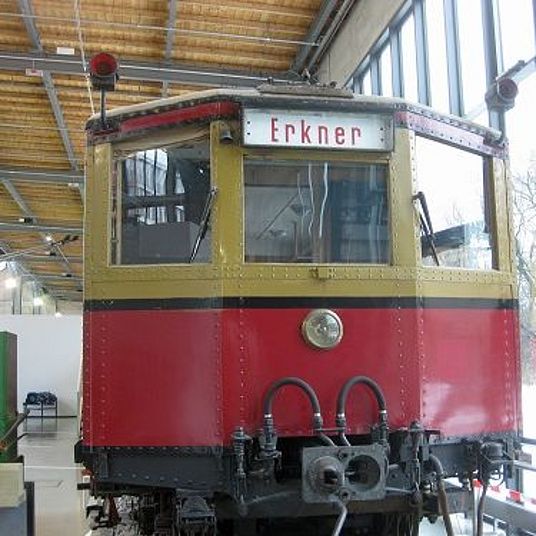
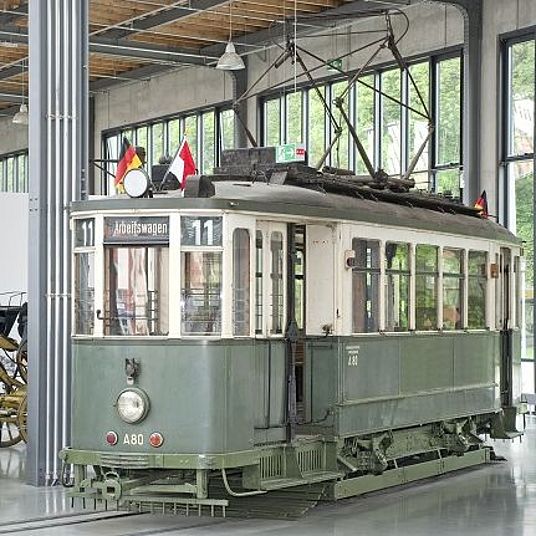
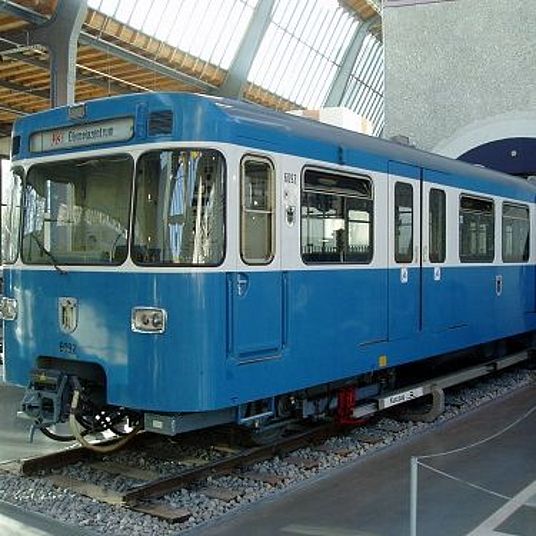
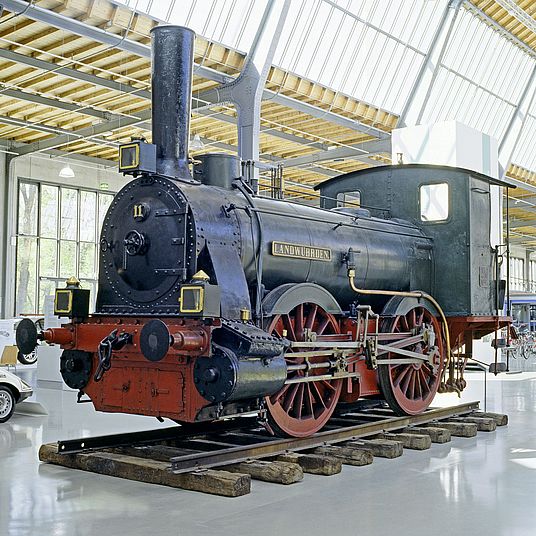
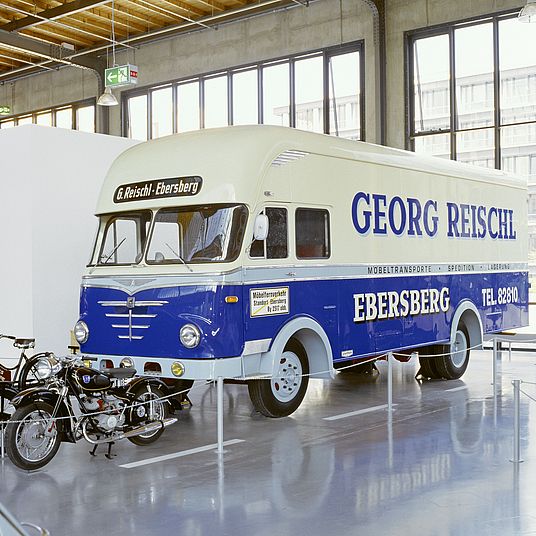
![Messerschmitt Kabinenroller in Hall I [Translate to English:] Messerschmitt Kabinenroller with light green paintwork](/assets/_processed_/5/5/csm_Messerschmitt_901df1e93d.jpg)
